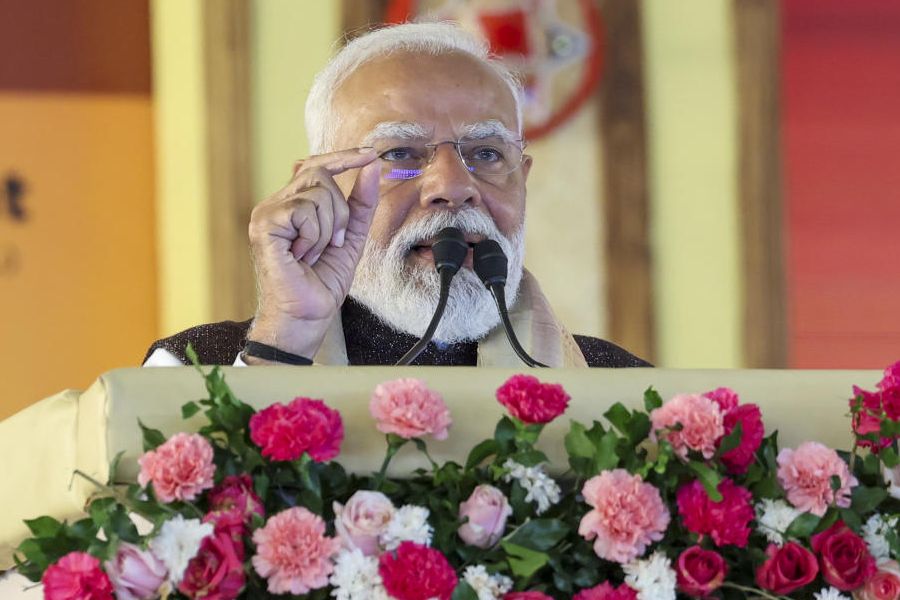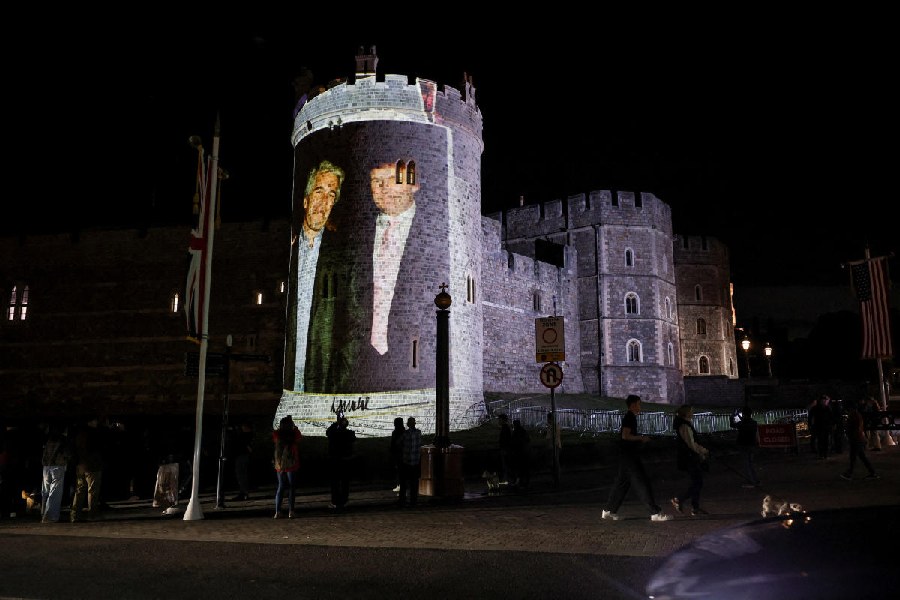OUR CITY THAT YEAR
By Geetanjali Shree (Translated by Daisy Rockwell)
Hamish Hamilton, Rs 699
Geetanjali Shree and Daisy Rockwell come together to reintroduce a classic whose moment of reckoning has been a quarter of a century in the making.
Hannah Arendt noted that Adolf Eichmann, a Nazi whose trial she reported on, presented himself as a “terrifyingly normal” person who was incapable of serious thought beyond diktat and, therefore, of conceiving evil, making a grander statement that people don’t need to think cruelly to be cruel — evil often marauds shrouded in an innocuous schedule, a necessary scheme, eclipsed by the thudding onward march of time. This is its banality. There are faults in this generalness but in an abstracted form, Arendt holds true. Evil frolics in our silences as much as in our active involvement. When Geetanjali Shree’s original Hindi work, Hamara Shahar Us Baras, a bound syllabary of half-remembered dreams, was published in 1998, it was in the long shadow of a demolished mosque. This is a perennially relevant riposte where every narrative beat has, for better or worse, only gained sheen and heft with time.
Characters: Hanif, Sharad, Shruti, and an unnamed, bodiless, first-person narrator. An apparition. The narrator is unobserved, a scribe, though she claims she is not omniscient — but can she be trusted? In one scene she states, “If anyone was absent, maybe it was me, because it was in me that their souls trembled, their storms raged.”
Hanif and Sharad work at the University. Shruti is a professional writer. Everyone suffers from constipation of conscience and writer’s block. “Don’t write a short story or a novel. It’s fine for a newspaper. The problem is with trying to dress it up as fiction,” proclaims a character, while another ruminates thusly on the horrors: “How could she consider our city and this year a windfall for a writer and make use of it?”
Outside, a religious outfit oils a killing machine. Melees and reactionaries ravage civil life. Within the ivory tower they are intellectuals with a mantle to shoulder, they thump their tome-laden chests: and do what? Draft a cute handbook about dealing with the human condition. Theirs is a life of unspooling ambition and insight and a troubling laziness shirks away qualms of complicity. Saffron paints the sky as organisers “[hurl] sharp bits of metal at the sun, slicing it to ribbons”.
It is an astutely hilarious and confident work. Humour, of course, is dark. A character asks another if they need a copy of Our Blood-stained and Horrifying History, with a knowing smile. Life carries on.
Possessed by our puny desires, a battle is lost. Allow comparison with The Zone of Interest, the novel, or better still Jonathan Glazer’s film about gas chamber operators where Arendt’s credo is embraced with such ferocity that the ordinariness of the proceedings must be highlighted by brief intermissions of the extra. Of the dreamy. In Our City… Daddu, an irritant, begins floating in the air without preamble. It is psychedelic: in another, he takes a pill and lolls around on his diwan which tumbles like a tabernacle.
Mary McCarthy said that Arendt’s thesis was wrong by design because how was Eichmann, a man incapable of consideration, not a monster? As of writing this review, news comes in from the Middle East of exploding pagers killing people. That the human suffering of a colonised people is still the subject of debate is cruelly inane. The buck stops nowhere, a sliding scale stretching into the abyss. The flattening effect of routine and our own solipsism should rework the banality thesis into one about indifference: the complicity of bystanders, the ordinariness of mere inert goodness. Examples abound in India of newsroom takeovers and ideological switcheroos, of, frankly speaking, a nation wanting to know only the victor of a shouting match. In a documentary, Ravish Kumar watches as his newsroom is sold for parts. As sane voices are vanquished by corporate ownership or subdued by seeds of doubt, we witness the rise of highly erudite suck-ups. Our narrator, through Shruti’s formidable indecisiveness, lashes out at reportage masquerading as writing. In the post-truth era, merely reproducing quotes won’t cut it: you need a tune, you need, to not say much, an agenda.
Daisy Rockwell’s translation is its own magisterial account, steering clear of the twee approaches to Hindi translation that have come to jive in much contemporary work. A personal pet peeve in elliptical storytelling is of short scenes ending in the characters laughing, just laughing, in faux fashion about boring things, a bonny replacement for the theatrical ‘Curtains!’ Rockwell precisely captures varieties of laughter: grating, insincere, obsolete, of the Hindi original. By the end of the work, it is a bloody march of raining crescendos and raucous, crushing silences. Fredric Jameson would have said, “Always historicize!” — and so we retread our collective histories in forms new and critical. What a glorious work.











